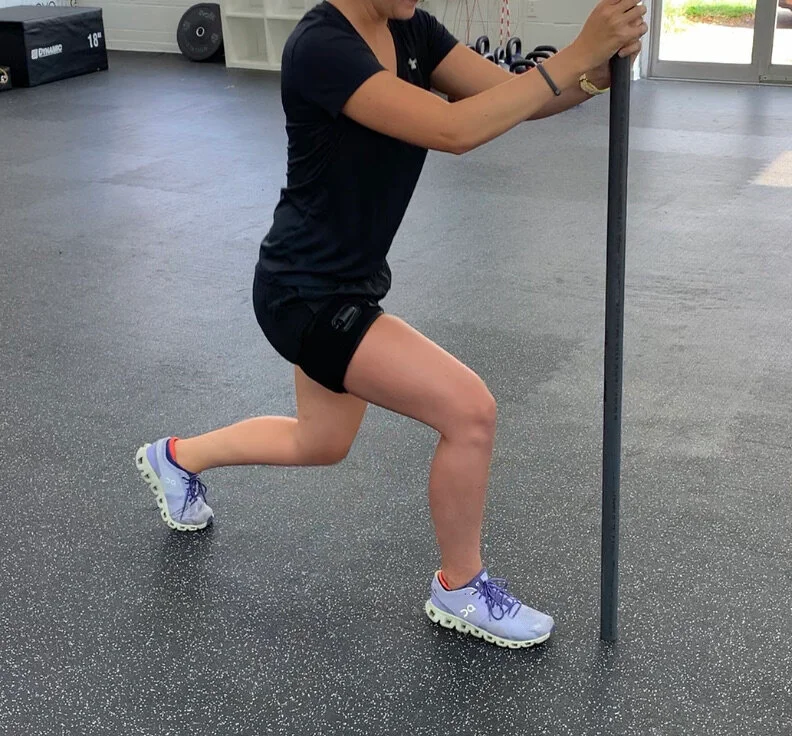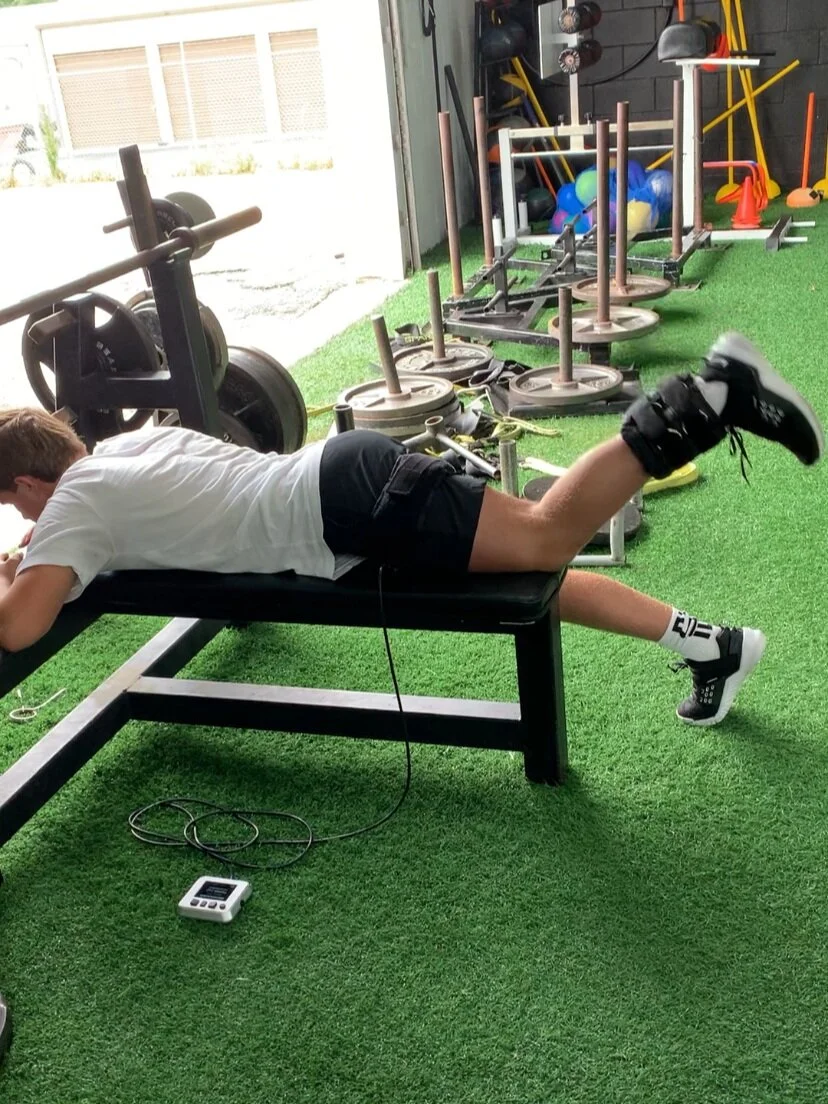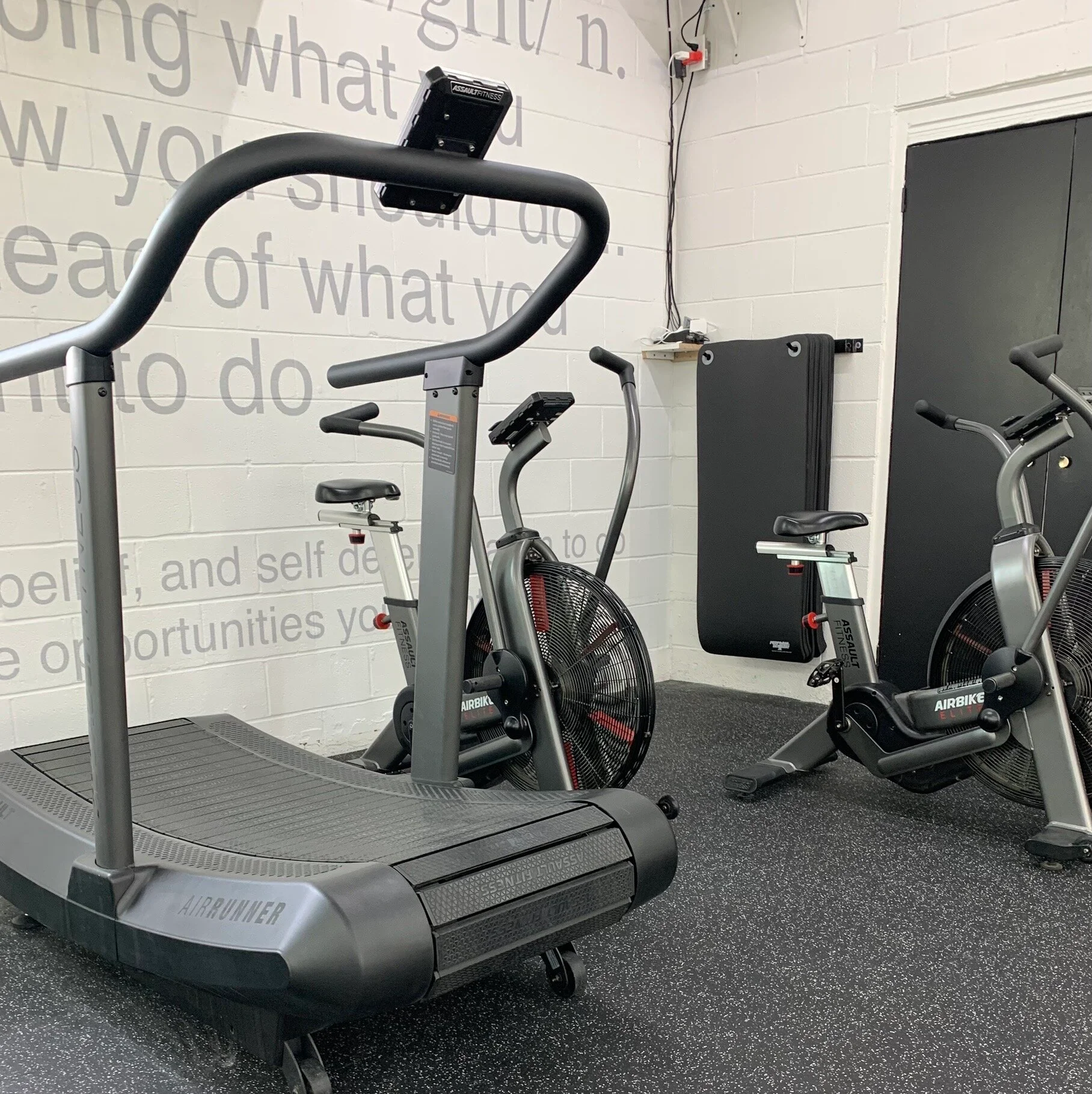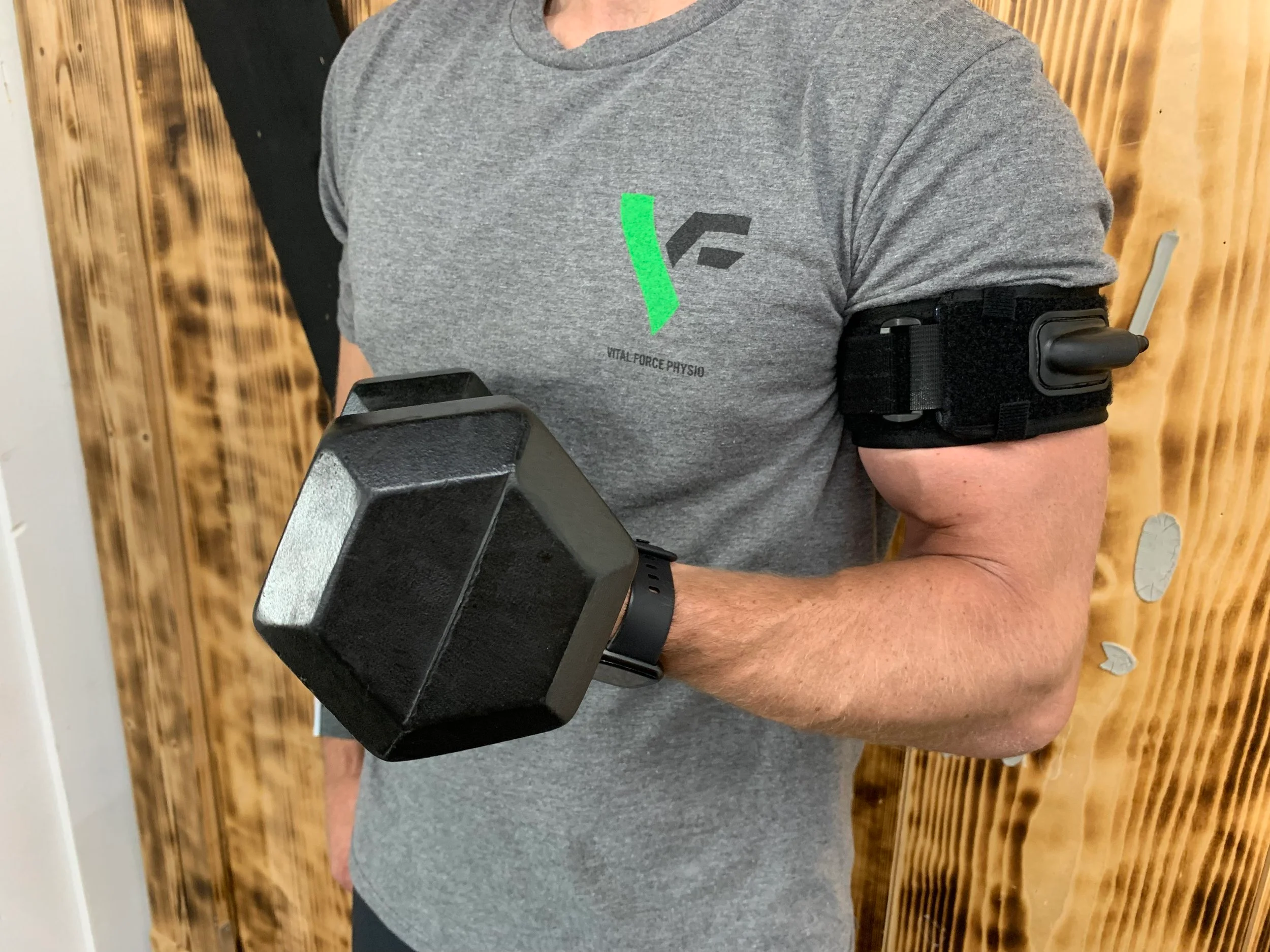What is Blood Flow Restriction Training?
Blood Flow Restriction Training or BFR has quickly become a popular intervention in strength and conditioning, sports performance, and rehabilitation. But what exactly is BFR? How does it work? And how effective is it? If you are looking to be on the cutting edge of sports science and human performance, take a dive into this article.

BFR uses a tourniquet-like blood pressure cuff to occlude blood flow to the working muscles of an exercise. Cuffs are placed either around the upper arm or upper leg depending on the muscles being targeted. By restricting blood flow, an environment of local tissue damage is created at a significantly high level. When the cuffs are released with cessation of exercise, a rush of blood flow containing tissue repairing, and rebuilding hormones are sent to the working muscles.
Now how is this different than “normal” weight training and exercise?
The answer is simple. With BFR you need less resistance to elicit the same and, in many cases, greater results in strength, tissue hypertrophy and sports performance (5).
How much resistance is appropriate?
BFR protocols call for you to lift 10-20% of your 1 rep max (1RM) for muscle and tissue hypertrophy and strength gains. In contrast, the National Strength and Conditioning Association recommends lifting weights at 65-80% 1RM with traditional weight training to create the same results (2). This is beneficial for individuals or athletes recovering from injuries since injured tissue cannot withstand the stresses of high intensity resistance training due to a multitude of factors (pain, neuromuscular inhibition, mobility restrictions, etc.). BFR bridges the gap between rehab and performance by allowing individuals to apply a muscle enhancing stimulus while still promoting tissue healing.
How long to see these strength and hypertrophy gains?
Typical resistance training takes 6-12 weeks, depending on an individual’s training age and fitness level. BFR studies have shown significant increases in muscle tissue strength and hypertrophy in just 3-6 weeks! (5).

Do you only use it for building muscle?
BFR has also been shown to improve aerobic capacity, a metric used to quantify an individual’s ability to efficiently run, cycle, swim, or perform any activity that requires an athlete to work at a high aerobic threshold (1). One protocol that has demonstrated promising results is treadmill walking or stationary cycling while monitoring heart rate via the Karvonen Method.

What about BFR for Recovery?
Delayed Onset Muscle Soreness (DOMS) has been shown to decrease after application of the IPC Protocol where cuff pressure is increased to 100% occlusion (4). The protocol is performed either before or after a bout of exercise for intervals of 5 mins on and 3-5 mins off (pressure released) for 30 mins.

What exercises can you perform for muscle strength and hypertrophy?
The sky is the limit! Any exercise you would typically program into your strength and conditioning regimen can be used with BFR. However, it is recommended to start out with less technical exercises due to the high intensity of BFR. Don’t let the low resistance fool you, BFR is hard work!
What about reps, sets, exercise order?
The most studied and elucidated rep/set scheme to date is that of 30, 15, 15, 15. Compound exercises are performed first, followed by isolation exercises. No more than 3-5 total exercises in a session should be performed and no more than 20 mins of cuff occlusion without release of pressure should be allowed (3). Additionally, a 30 second rest interval is required between each set. The high volume, low rest nature of the program allows for significant stress to be applied to the working muscles, and in turn stimulates the body’s system responsible for repair and growth. At first, this scheme may be too challenging or uncomfortable, so it is advised to drop down to 20, 10, 10, 10 until tolerance is achieved.
Blood Flow Restriction Training is an excellent and evidence-based intervention that can be used in combination with traditional resistance training, strength and conditioning and rehabilitation protocols. Continued research and development will only strengthen our knowledge base on how BFR works and can be utilized most effectively. It is recommended that you seek out a certified and trained practitioner prior to initiating a Blood Flow Restriction Training Program to ensure safety and optimal results.
If you are interested in Blood Flow Restriction Training to help Outperform Your Pain or enhance your sport performance, contact Vital Force Physio via email: drvranic@vitalforcephysio.com, phone: (513) 716-5105 or fill out our submission form on our website.
Movement is Vital for a healthy body and Your Body is a Force to be reckoned with,
Dr. Bryan Vranic, PT, DPT, CSCS
Please consult your Physical Therapist, Physician or Healthcare Provider before starting any new exercise program.
References
1. Formiga, M. F., Fay, R., Hutchinson, S., Locandro, N., Ceballos, A., Lesh, A., Buscheck, J., Meanor, J., Owens, J. G., & Cahalin, L. P. (2020). EFFECT OF AEROBIC EXERCISE TRAINING WITH AND WITHOUT BLOOD FLOW RESTRICTION ON AEROBIC CAPACITY IN HEALTHY YOUNG ADULTS: A SYSTEMATIC REVIEW WITH META-ANALYSIS. International journal of sports physical therapy, 15(2), 175–187.
2. Haff, Greg, Triplett, Travis. Essentials of Strength Training and Conditioning, Human Kinetics, 2016, pp. 454-458.
3. Le Cara, E., Novo, M., Rolnick, N., & Ascanio, Y. (n.d.). Smart Cuffs: Blood Flow Restriction Level 1. Smart Tools Plus, LLC.
4. Page, W., Swan, R., & Patterson, S. D. (2017). The effect of intermittent lower limb occlusion on recovery following exercise-induced muscle damage: A randomized controlled trial. Journal of Science and Medicine in Sport, 20(8), 729–733. https://doi.org/10.1016/j.jsams.2016.11.015
5. Vanwye, W. R., Weatherholt, A. M., & Mikesky, A. E. (2017). Blood Flow Restriction Training: Implementation into Clinical Practice. International journal of exercise science, 10(5), 649–654.


